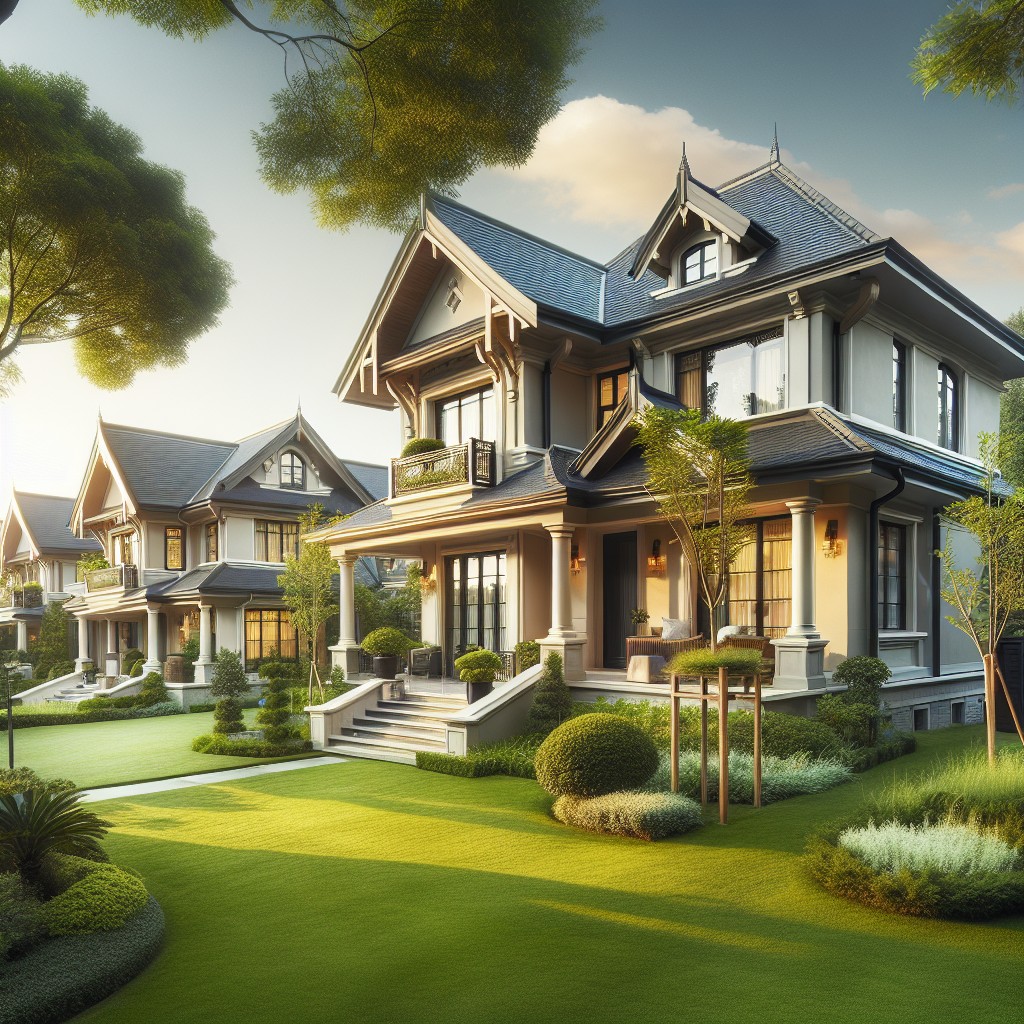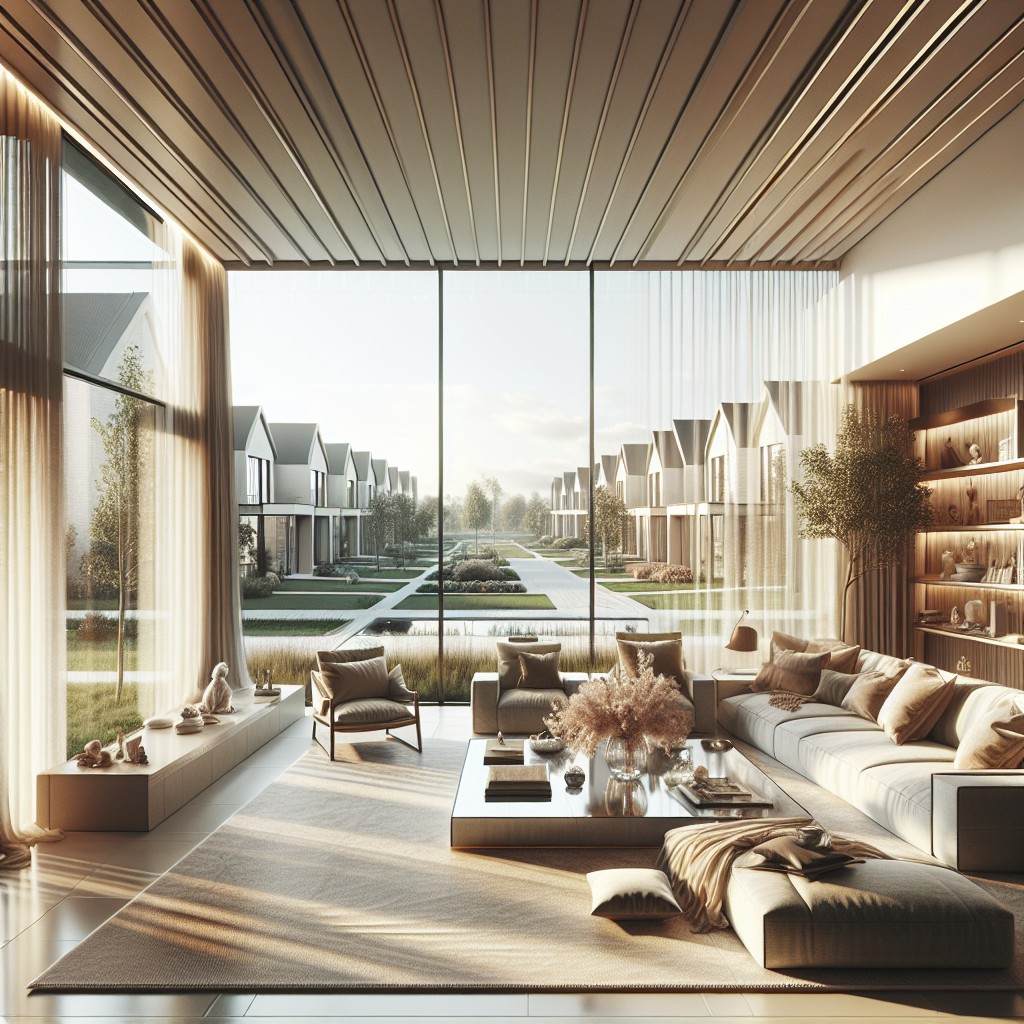Last updated on
Explore the eco-friendly and rustic beauty of barn homes because they offer a unique blend of durability, sustainability, and charm.
Key takeaways:
- Expertise in Hybrid Construction: Combining classic post-and-beam with modern techniques.
- Material Sourcing: Using sustainable reclaimed wood and durable materials.
- Energy Efficiency: Focus on insulation and passive solar heating.
- Custom Design: Floor plans tailored to preferences and uses.
- Local Compliance: Builders ensure adherence to local building codes and regulations.
Understanding Barn Home Builders

Barn home builders specialize in constructing homes that blend traditional barn aesthetics with modern living spaces, creating structures known as “barndominiums.” They mix rustic elements like exposed wooden beams with contemporary amenities.
Familiarize yourself with the following concepts to fully understand the role of these builders:
- Expertise in Hybrid Construction: They possess unique skills that combine classic post-and-beam construction with current building techniques.
- Material Sourcing: Builders often source sustainable, durable materials like reclaimed wood, capable of withstanding various climates.
- Energy Efficiency: Many prioritize energy-efficient designs, integrating features like high-grade insulation and passive solar heating.
- Custom Design: These builders usually offer customizable floor plans that can accommodate a range of preferences and uses, from residential to mixed utility.
- Local Compliance: They ensure that designs comply with local building codes and regulations, which may vary significantly by location.
By choosing a reputable barn home builder with the right expertise, potential homeowners can ensure that their home is not only attractive and comfortable but also sustainable and built to last.
Types of Barn Homes
Traditional barn homes, often referred to as barndominiums, blend rustic charm with modern living spaces. These structures typically feature a post and beam construction, which allows for open-concept interiors and high ceilings.
Classic pole barns utilize large poles or posts buried in the ground to support the roof. This method is cost-effective and simplifies the construction process.
Metal barn homes have surged in popularity due to their durability and the ease of incorporating pre-engineered elements. They provide strong resistance to environmental factors and can be customized with various finishes.
Timber frame barn homes showcase the beauty of exposed wooden beams and joinery. The architectural design emphasizes craftsmanship and can accommodate a variety of aesthetic preferences, from traditional to contemporary.
Monitor barn homes are characterized by a raised center aisle, providing increased ventilation and light. This style is especially appealing to those looking for a distinctive profile and multi-level living spaces.
Each type offers unique benefits and aesthetic appeal, allowing for a custom home that fits personal tastes and lifestyle needs.
Barn Home Building Innovations
Advancements in materials, such as engineered wood and sustainable insulation, betters thermal performance and durability while reducing environmental impact.
Prefabrication techniques streamline the construction process, allowing components to be assembled in a controlled environment, minimizing onsite waste and construction time.
Smart home technology integrates into these rustic spaces for efficient energy management and improved living comfort.
Additionally, adaptive reuse of existing barn structures for new homes preserves history and reduces the resources needed for new construction.
These innovations reflect growing demands for efficiency, sustainability, and the unique charm of modern barn living.
Barn Home Design Trends
Recently, blending rustic charm with modern amenities has become a hallmark in barn home aesthetics. Open concept floor plans are popular, enhancing the sense of space and creating a seamless flow between living, dining, and kitchen areas. Exposed beams and rafters, often preserved in their natural state or stained for dramatic effect, contribute to the authentic barn feel while offering visual interest and architectural detail.
Sustainability is at the forefront, with eco-friendly materials like reclaimed wood being a favorite choice for both environmental and stylistic reasons. Large, energy-efficient windows are standard to maximize natural light and to frame the picturesque surroundings often associated with barn-home settings.
Lofted spaces are not only a nod to traditional haylofts but also provide versatile areas for bedrooms, offices, or lounges. Regarding exterior finishes, there is a tendency toward using durable, low-maintenance materials that blend well with the natural environment, such as stone accents and metal roofing.
Interior design trends highlight a mix of textures and patterns, combining industrial elements such as wrought-iron fixtures with the warmth of aged leathers and soft textiles, embodying a perfect marriage between the barn’s rustic past and a comfortable, contemporary lifestyle.
Personalized Options for Your Barn Home
Crafting a barn home to meet individual needs and preferences is an exciting aspect of the build process. Here are some key points to consider for personalization:
- Floor plans can be custom-tailored, whether you’re seeking an open-concept space or a cozier, compartmentalized layout.
- Interior finishes range from rustic to modern, allowing your barn home to reflect your personal style.
- Energy efficiency can be enhanced through the choice of insulation materials, windows, and doors.
- Smart home technology integration is possible for those desiring convenience and control over their living environment.
- Exterior aesthetics, including siding materials and colors, can be selected to fit into the landscape or stand out as a statement piece.
- Loft spaces offer versatility, serving as additional bedrooms, offices, or entertainment areas.
- Eco-friendly options like solar panel readiness and rainwater collection systems are available for the environmentally conscious homeowner.
Nationwide Design and Build Services
Securing a reliable contractor capable of executing your barn home vision is paramount. Nationwide services offer the convenience of connecting you with expert builders wherever you are. These firms typically provide comprehensive packages inclusive of design, materials, prefabrication, delivery, and assembly. This holistic approach ensures that your project is handled consistently from conception to completion, often resulting in more efficient timelines and cohesive designs.
- Collaboration with architects: Tailor your space to your lifestyle needs with professional guidance.
- Cross-country logistics: Materials and crew arrive at your site, regardless of location.
- Streamlined process: Experience a seamless transition between design, delivery, and construction phases.
With nationwide coverage, you can tap into a broad range of styles and tap local knowledge, ensuring your barn home sits harmoniously within its landscape. These services eliminate the need for multiple contracts and coordination between different companies, making the build process more straightforward for you.
On-site Framing and Installation
Precision and efficiency are paramount during the on-site framing and installation phase. Expert craftsmen arrive equipped with pre-engineered components, ensuring that each piece aligns perfectly with the design specifications. This modular approach to construction substantially reduces build time and minimizes material waste.
- Pre-cut frames streamline assembly, enabling a quicker, weather-tight shell construction.
- The use of advanced panelized systems permits rapid enclosure of the building, protecting the interior from the elements early in the process.
- On-site framing teams collaborate closely with project managers, maintaining quality control and adhering strictly to the planned timeline.
- Installation crews utilize state-of-the-art equipment to implement modern joinery and insulation methods, laying the groundwork for energy-efficient homes.
- Throughout the installation, a keen focus on structural integrity ensures that your barn home will meet all local building codes and requirements.
This hands-on phase is pivotal for translating blueprint to reality, setting the stage for the intricate detailing that will transform the structure into a cozy, personalized haven.
Customizing Wood Interiors for Wellness
Incorporating natural wood into your barn home’s interior isn’t merely aesthetic—it contributes significantly to a healthier living environment. Natural wood can improve indoor air quality by regulating humidity, as it naturally absorbs and releases moisture to maintain balance. The rich, organic texture of wood also has a biophilic effect, promoting mental and emotional well-being by creating a connection to nature.
When planning your wood interior:
- Choose low-VOC finishes to safeguard indoor air quality.
- Utilize reclaimed or sustainably sourced timber to support the environment.
- Consider the thermal properties of different woods to enhance insulation.
- Integrate plants and green spaces to complement the wood features and improve air quality.
- Implement ample natural lighting to highlight the wood’s natural beauty and provide vitamin D.
Keep in mind, selecting the right wood and design can transform your barn home into a serene retreat that nurtures both your health and the planet.
The Oakridge Model
The Oakridge stands out with its distinct blend of functionality and comfort, ideal for those seeking a balance between work and living spaces.
Characterized by a generous loft area, it offers ample room for relaxation or storage.
Its versatile design accommodates a variety of floor plans, allowing for customization to individual lifestyle needs.
Natural light is a central feature, thanks to large windows and optional skylights that create an inviting interior atmosphere.
Durability is also a key aspect, with high-quality materials designed to withstand diverse climates, ensuring that this model is not only aesthetically pleasing but also resilient and long-lasting.
The Shasta Model
With its high-pitched roof and classic barn silhouette, The Shasta model combines traditional aesthetics with modern living comforts. Ideal for those who prefer lofted spaces, this design often features ample vertical space for high ceilings or a second-floor mezzanine.
Key attributes include:
- Spacious, open-concept layout, facilitating a seamless flow between living, dining, and kitchen areas.
- Large, picturesque windows designed to maximize natural light and offer breathtaking views of the surrounding landscape.
- Energy-efficient materials and options to enhance sustainability and reduce long-term utility expenses.
- Excellent versatility with the option to customize interior finishes and incorporate eco-friendly technologies such as solar panels or rainwater harvesting systems.
The Shasta is well-suited for families looking for the charm of a traditional barn without compromising on modern amenities.
The Build Process: From Consultation to Construction
Embarking on the journey to create your barn home typically begins with a detailed consultation. During this initial meeting, you’ll discuss your vision, needs, and preferences with the building team. They’ll help you select a floor plan and design elements that align with your lifestyle.
After finalizing the design, the project moves into the permitting phase. Builders will ensure all necessary documentation is in order and local building codes are met. Once permits are secured, the construction phase kicks off with site preparation, which includes clearing land and laying a proper foundation.
The structure’s skeleton, usually wooden posts and beams, is erected. Following this, the build-out of the interior starts, with careful attention to insulation, electrical wiring, and plumbing. Finishes are then applied, including flooring, cabinets, and fixtures, to bring your space to life.
Throughout construction, open communication is maintained to keep you informed of progress and to make any necessary adjustments. The collaborative spirit remains constant from the first discussion until the moment you step into your completed barn home.
Customization Options for Barn Features
Choosing the right features can turn a simple barn into a personalized haven. The roof style, for instance, may vary from classic gabled to modern gambrel designs, each offering a distinctive look and space dynamics. Doors are another essential element where one can opt for the traditional large sliding barn doors or select from a variety of roll-up or French doors to add functionality and character.
Windows play a crucial role in natural lighting and aesthetics. Options range from picturesque dormers to energy-efficient, double-paned windows. For the interior, the possibilities are vast; from lofted spaces that add an extra layer of living area to the choice of wall finishes that can be wood cladding for a rustic touch or drywall for a contemporary feel.
Incorporating eco-friendly features like solar panels or rainwater collection systems not only personalizes the space but also contributes to a sustainable lifestyle. Finally, don’t overlook the importance of insulation and HVAC systems tailored for climate control and energy efficiency, ensuring your barn home remains comfortable year-round.
Financing Options With PrimeLending
Navigating the financial aspect of barn home construction can be straightforward with the right partner. PrimeLending offers specialized financing that caters to the unique needs of barn home builders.
Construction Loans: PrimeLending provides construction loans which convert to permanent mortgages upon completion of your home, simplifying the process with a single closing.
Loan Flexibility: They offer flexibility in terms, with fixed or adjustable-rate mortgages available depending on your long-term financial goals.
Down Payments: Explore options with varying down payment requirements, potentially as low as 10% for qualified buyers, making it accessible for more homeowners.
Rate Locks: Protect yourself from interest rate fluctuations during construction with extended rate lock programs.
Expert Guidance: Rely on PrimeLending’s expertise in this niche financing area to navigate the specifics of funding your barn home project.
Maintaining Your Barndominium
Regular upkeep of a barndominium, similar to that of any home, is essential to preserve its value and ensure safety. Key maintenance tasks include:
- Exterior Inspection: Check for signs of wear on the siding, roofing materials, and windows. Look out for cracks or splits in the wood, and ensure metal surfaces are free from rust or deterioration.
- Pest Control: Address any signs of infestation promptly. Sealing gaps and applying appropriate treatments can help prevent insects and rodents from causing damage.
- Heating and Cooling Systems: Change filters regularly and have systems serviced annually to maintain efficiency and prevent costly repairs.
- Plumbing: Inspect for leaks or water damage, especially in areas where pipes may be exposed to colder temperatures, to prevent freezing and bursting.
- Wood Treatment: If your barndominium has exposed wood, you may need to treat it to protect against rot, mold, and UV damage.
- Gutters and Downspouts: Keep them clear of debris to ensure proper drainage and prevent water from accumulating near the foundation.
- Interior Inspection: Evaluate the floors, walls, and ceilings for any signs of damage or needed repairs, such as gaps in trim or loose tiles.
Adhering to a regular maintenance schedule can mitigate potential issues and help your barndominium remain a durable and comfortable living space for years to come.
Additional Resources and Contact Information
For those seeking further guidance on barn home construction, several resources are readily available. Prospective homeowners can explore the National Barn Home Builders Association website for educational materials, a directory of builders, and case studies of completed projects.
Architectural design software tools like SketchUp and Floorplanner offer a platform to visualize your barn home before construction begins.
Books such as “Building a Barn Home: A Comprehensive Guide” provide insights into the planning, design, and building process.
For specific inquiries, engaging with online forums or local workshops can connect you with experienced builders and designers.
Many builders also provide detailed FAQs and blog articles on their websites.
To get in touch with a professional, most barn home builders offer an online contact form, direct email, and phone number on their website.
Organizing a visit to a model barn home or showrooms where you can interact with materials and speak to experts in person can be a decisive step in your barn home journey.
FAQ
What are barn style houses called?
Barn style houses are commonly referred to as barndominiums.
What is the cheapest type of barn to build?
The cheapest type of barn to build is the pole barn due to its simple structure requiring minimal materials such as telegraph poles for support and metal corrugated sheets for the roof.
Are barn homes sturdy?
Yes, barn homes, also known as barndominiums, are sturdy due to their metal construction providing significant strength, durability, and security comparable to or surpassing that of traditional homes.
How are barn homes energy-efficient compared to traditional homes?
Barn homes are more energy-efficient than traditional homes because their design often incorporates simplified architectural lines and energy-saving features such as recycled building materials, natural insulation and passive solar design.
Can existing barns be converted into sustainable residences?
Yes, existing barns can be converted into sustainable residences through certain modifications and upgrades such as installing insulation, energy-efficient systems, and sustainable materials.
What are the specific benefits of using reclaimed timber in barn home construction?
Reclaimed timber in barn home construction offers benefits such as environmental conservation, structural durability, aesthetic appeal, and uniqueness of design.
Related reading:
Table of Contents





